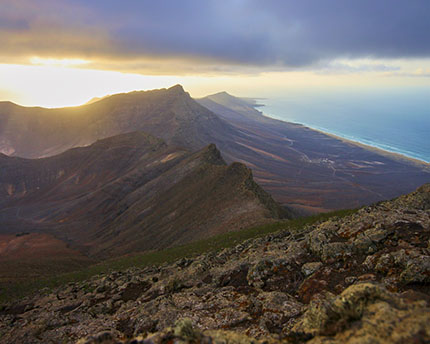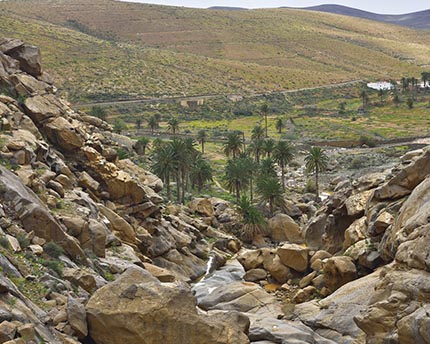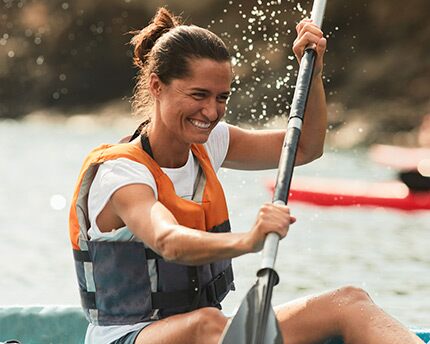As you head northbound along the FV-1—the road that connects the island’s capital, Puerto del Rosario, with the tourist resort of Corralejo—it’s hard to ignore your entry into one of the best kept natural wonders of Fuerteventura, the Corralejo sand dunes. Spanning a total of 2,600 hectares, a width of 2.5 kilometres and a length of 10 kilometres, this enormous land of dunes—considered the largest in the Canary Islands—runs parallel to the north-eastern coast of the island, in the municipality of La Oliva.
Declared a natural park in 1982 together with the neighbouring Lobos Island, it wasn’t until 1994 when the dunes were recognised as a single entity under the official name of Dunas de Corralejo Natural Park. Under the extensive blanket of white sand, in turn lies the typical Canarian malpaís, a volcanic landform in various shades of ochre that was formed over 50,000 years ago when the volcanoes that dot the area erupted simultaneously.
The third great feature of Dunas de Corralejo Natural Park are its long beaches and turquoise waters. Varied and unspoilt, they are perfect for water sports and are nudist friendly. If Fuerteventura is that ‘piece of Saharan Africa lost in the Atlantic’—as the Basque philosopher Miguel de Unamuno referred to it—then Corralejo sand dunes no doubt represent the beating heart of that African desert.
What to do in Corralejo Natural Park
Although the FV-1A literally slices through Corralejo sand dunes, they can only be explored by foot using designated trails. However, don’t let this be any cause for panic, as visitors can soak up the desert landscape in countless ways.
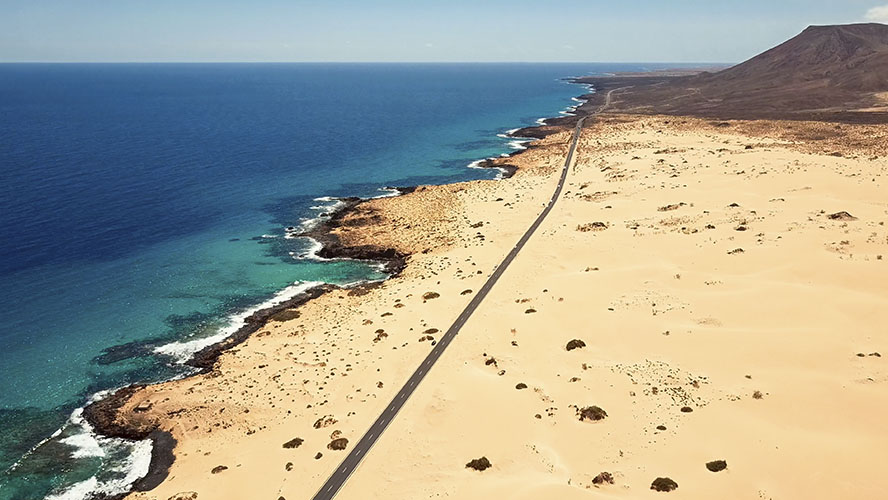
The aforementioned dunes begin in the north, beside the coastal town of Corralejo, and can reach heights of up to 50 metres above sea level. From them you can take incredible photographs showing the contrast between the sea of white sand and the blue Atlantic Ocean. You might also encounter one of the animal species that inhabit the area. Declared a Special Protection Area for Birds (SPA), they are its biggest asset, with notable species such as the great bustard and the houbara bustard, cream-coloured coursers, stone-curlews and common kestrels. In terms of mammals, it’s not unusual to see rabbits, squirrels and Fuerteventura goats. Meanwhile, the flora found in the area, much of it xerophile (adaptable to arid soils), offers visitors the chance to observe endemic local species such as the Androcymbium psammophilum and Tetraena fontanesii.
For its part, the southern section of the park is where you can see the area’s exposed soil, formed by solidified basalt flows that were once magma. The area is also home to the Montaña Roja, a volcanic cone with a height of 312 metres, whose summit offers extraordinary views of northern Fuerteventura, Lobos Island and the neighbouring island of Lanzarote, reached by means of an excellent hiking route.
Finally, if by chance you’re a fan of athletics, bear in mind that every November Corralejo sand dunes host the Fuerteventura Dunes International Half Marathon, a 21-kilometre race of which 95% is set within the confines of the natural park.
Enjoying Fuerteventura’s dunes in Corralejo
As previously mentioned, the other great feature of Dunas de Corralejo Natural Park are its beaches. More commonly known as the Grandes Playas de Corralejo, they border the dunes for nine kilometres and boast stable temperatures all year round. For this reason, there’s nothing more relaxing than walking through the dunes in the morning and taking a dip at the beach in the afternoon.
Frequently lashed by the trade winds that come from neighbouring Africa, the beaches often play host to the so-called corralitos: circular-shaped windbreaks constructed by hand out of stone. Nevertheless, this same wind is what has made the beaches into a hot-spot for water sports such as surfing, windsurfing and kitesurfing, attested to by the large amount of schools in the area.
The more northerly you get, the easier it is to find wide family-oriented beaches such as El Pozo, El Viejo and Bajo Negro. This last one, in fact, is highly recommended for families with children, as the beach’s wind doesn’t blow quite so fiercely and the shores are shallow for several metres.
Furthermore, as you head down towards the south, you’ll come across shorter, wilder beaches. El Burro beach, the location of the International Kite Festival since 1987, and El Moro beach, are fine examples.
A round-trip to Lobos Island
This small island in the municipality of La Oliva, which gets its name from the former colony of sea lions (lobos marinos in Spanish) that lived on its rocks, is just two kilometres from the town of Corralejo. Previously inhabited on and off by pirates in need of refuge, the island’s circumstances began to change in 1860 when the construction of Punta Martiño lighthouse led to the establishment of a permanent population of Portuguese workers.
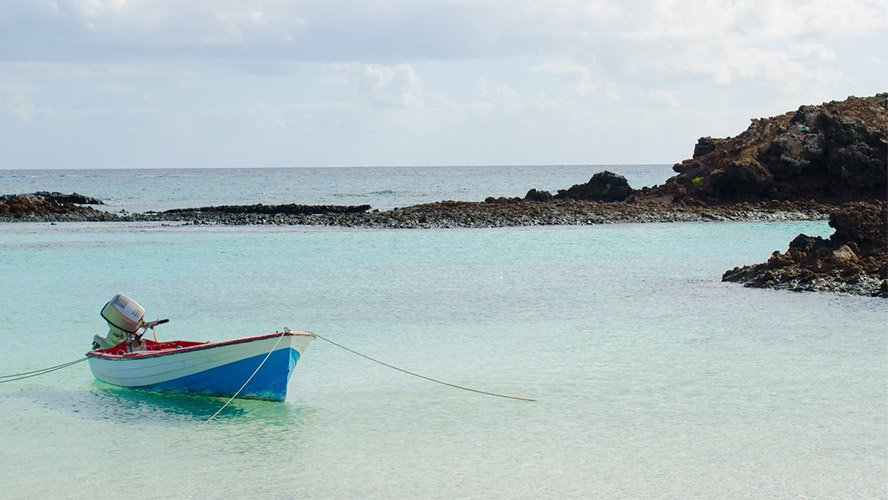
These days, the Island of Lobos is uninhabited due to strict protection laws. Nevertheless, by requesting a permit from the Island Council of Fuerteventura, tourists can visit it all year round. Set across six square kilometres and with 14 kilometres of coastline, you can discover the charm of an uninhabited land.
Of particular note among the activities on offer is the climb up to the top of La Caldera—a volcanic cone situated in the northwest of the island—which provides clear views of both Fuerteventura and Lanzarote. We also recommend taking a dip at La Concha beach (not to be confused with the eponymous beach in El Cotillo), or at Caleta de Rasca, where the only restaurant on the island is located.




































































